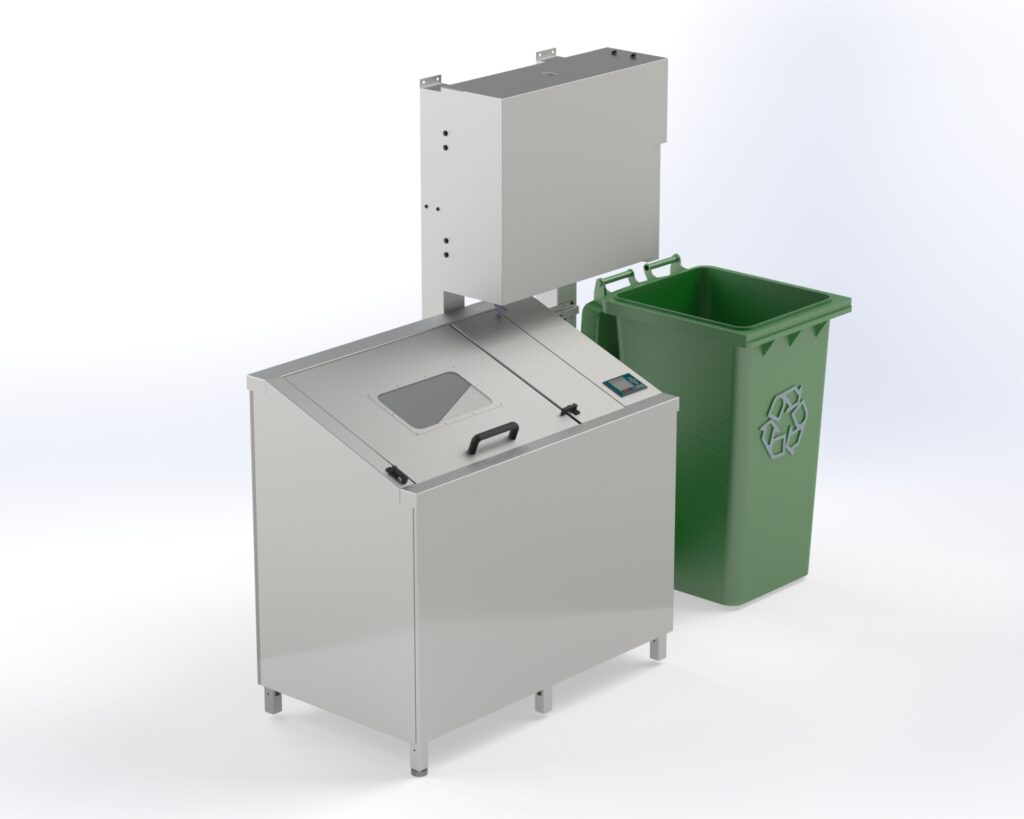KITCHEN CRUSHER - MOD1200 - INDEPENDENT: MAXI
KITCHEN CRUSHER - MOD1200 - INDEPENDENT: MAXI
Shreds food waste produced in large commercial establishments.
objectives
- Minimize labor cost in food management and waste collection and improve organization efficiency
internal. - Comply with HACCP rules.
- Carry out a real selective collection of the organic fraction.
Information:
DESCRIPTION:
It is made up of a stainless steel construction that contains a restaurant food waste grinder (1) and an auger at the bottom of the "inlet hopper" (2); The MACHINE is managed by a PLC unit, located inside the dashboard covered by the front panel (3), using work software that also informs the maintenance personnel about possible failures or malfunctions of the unit.
Next to the hopper cover are the controls (4), while next to the disposer cover is the spray hose (5) for washing the MACHINE. The rear is open, allowing easy access for maintenance personnel.
The MACHINE is equipped with a double active safety system that stops the grinder or auger when opening the respective covers. The MACHINE is predisposed to be connected, through suitable pipes, to a temporary storage tank and a dehydration unit.
OPERATING PRINCIPLE
This MAXI autonomous waste disposal unit has been designed for the elimination of food waste produced in large commercial establishments such as: supermarkets, restaurants, hotels, hospitals and catering users. Compared to other standalone units, this unit has been designed to operate on a BATCH FEED duty cycle.
The large capacity of the inlet hopper (almost 90 liters) that houses a stainless steel auger at the bottom of it, allows to process a large quantity of food waste, the typical food waste produced in supermarkets and large catering establishments, in operation batch feeding without applying any pretreatment mincing operation. The unit is equipped with a “boost” mechanism that allows the auger rotation times to be modified by pressing a command on the panel. The operator can extend the auger forward rotation time to process more food waste within the disposer.
The unit can be remotely connected to the drain area, normally located outside of the kitchen or food preparation area, via a dedicated drain line.
Through the dehydration process we achieve reductions in weight, volume and fermentability of food waste. While the aqueous component goes to the sewer system, the solid component (food waste), drastically reduced in weight (approximately 50%) and volume (approximately 80%) can be easily stored and recycled for possible reuse.


